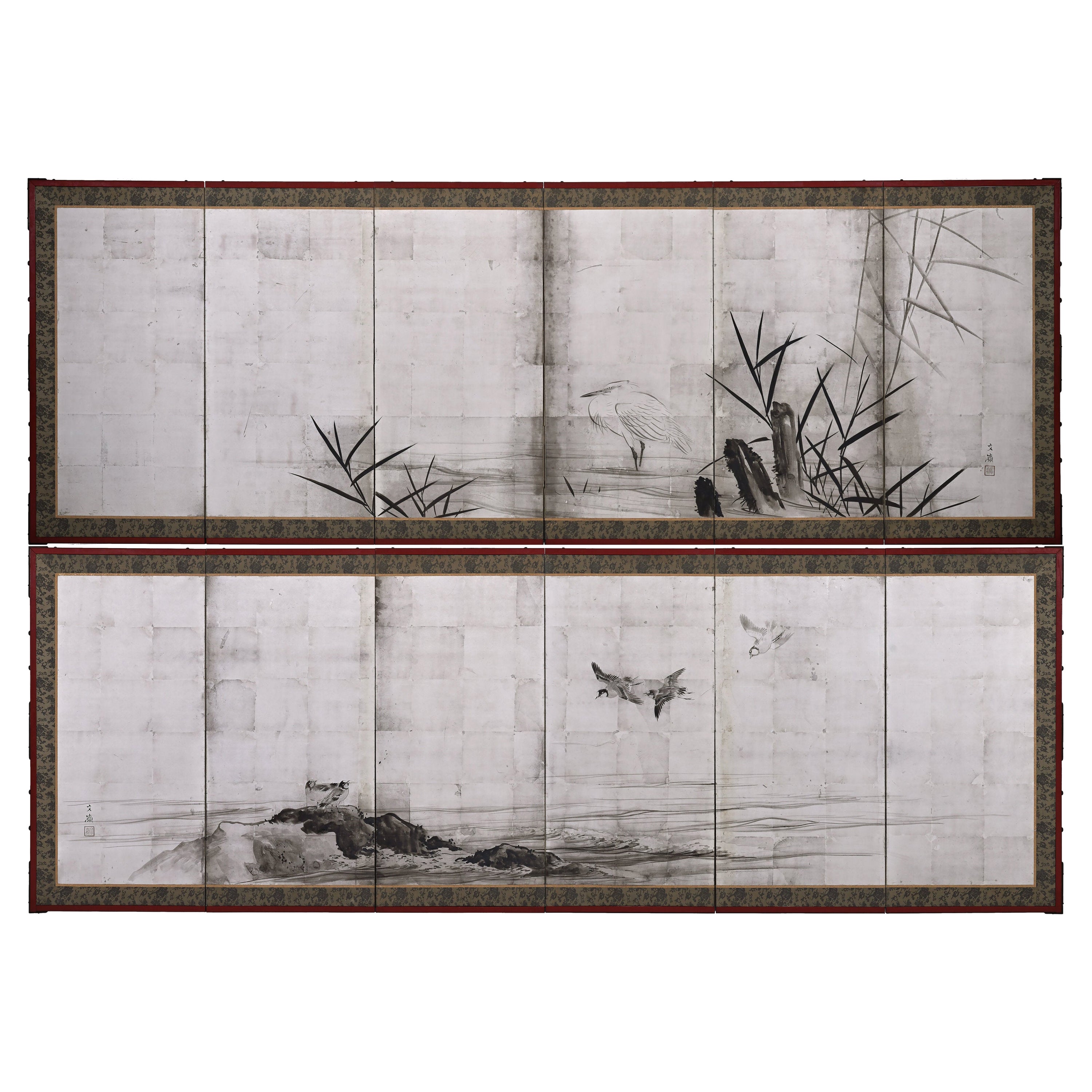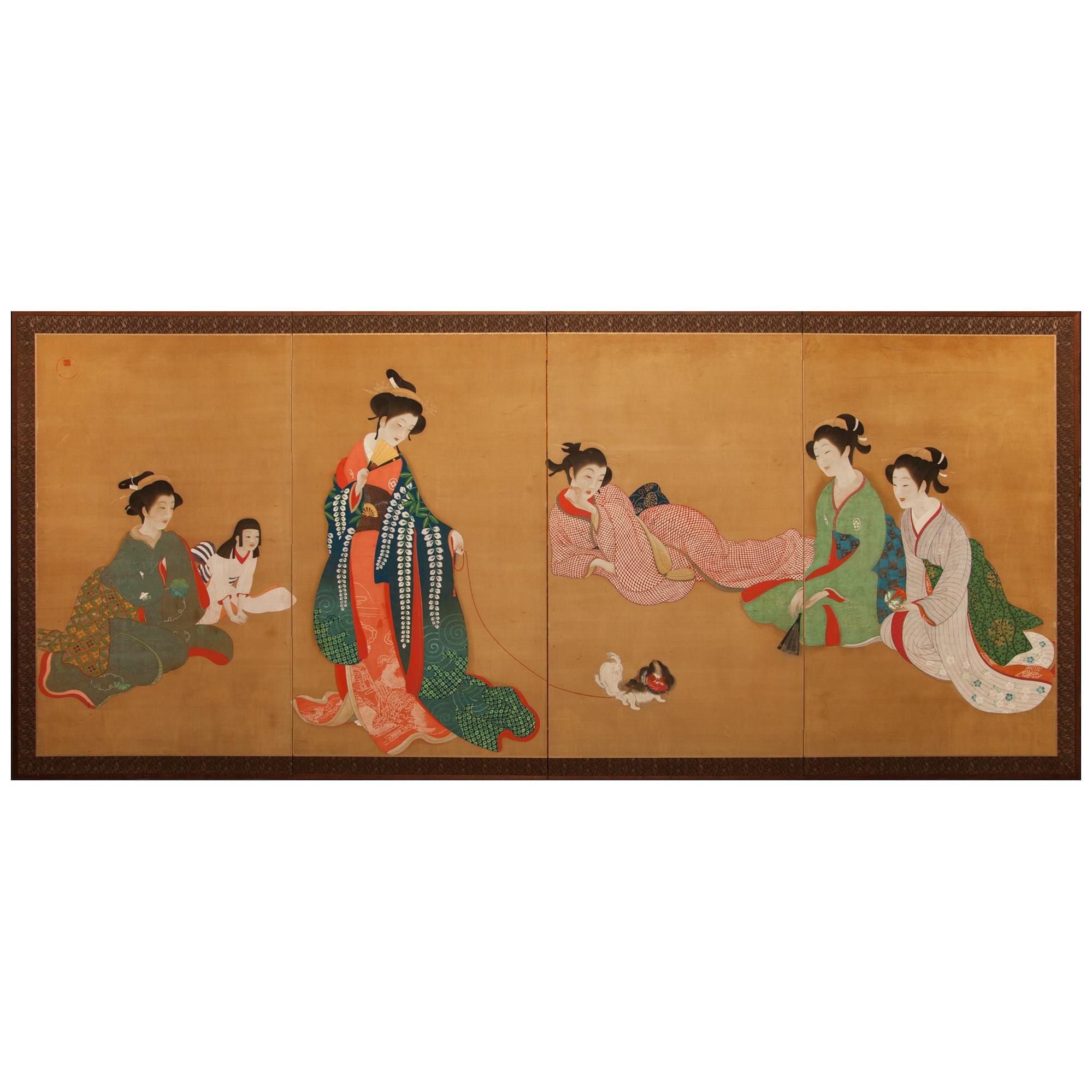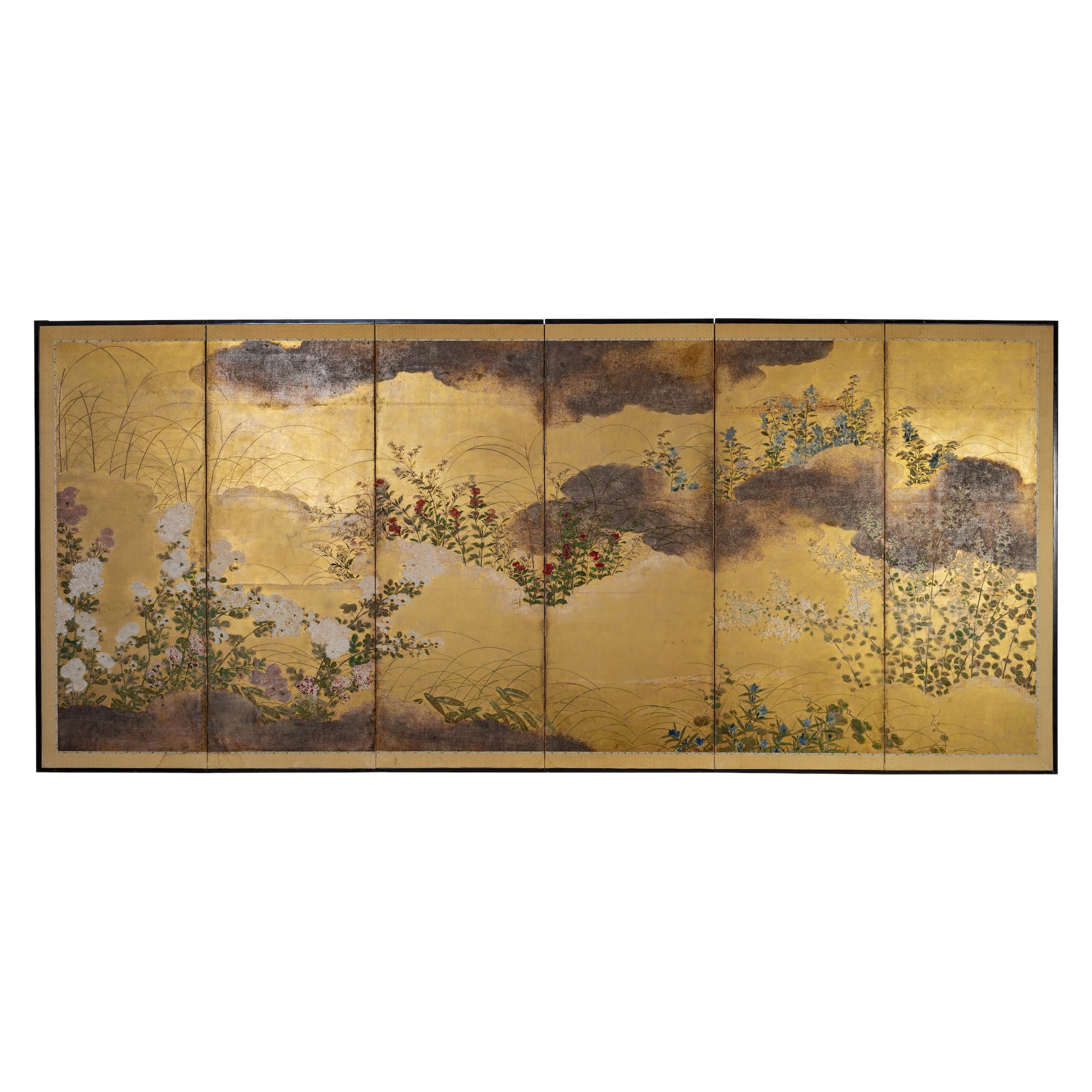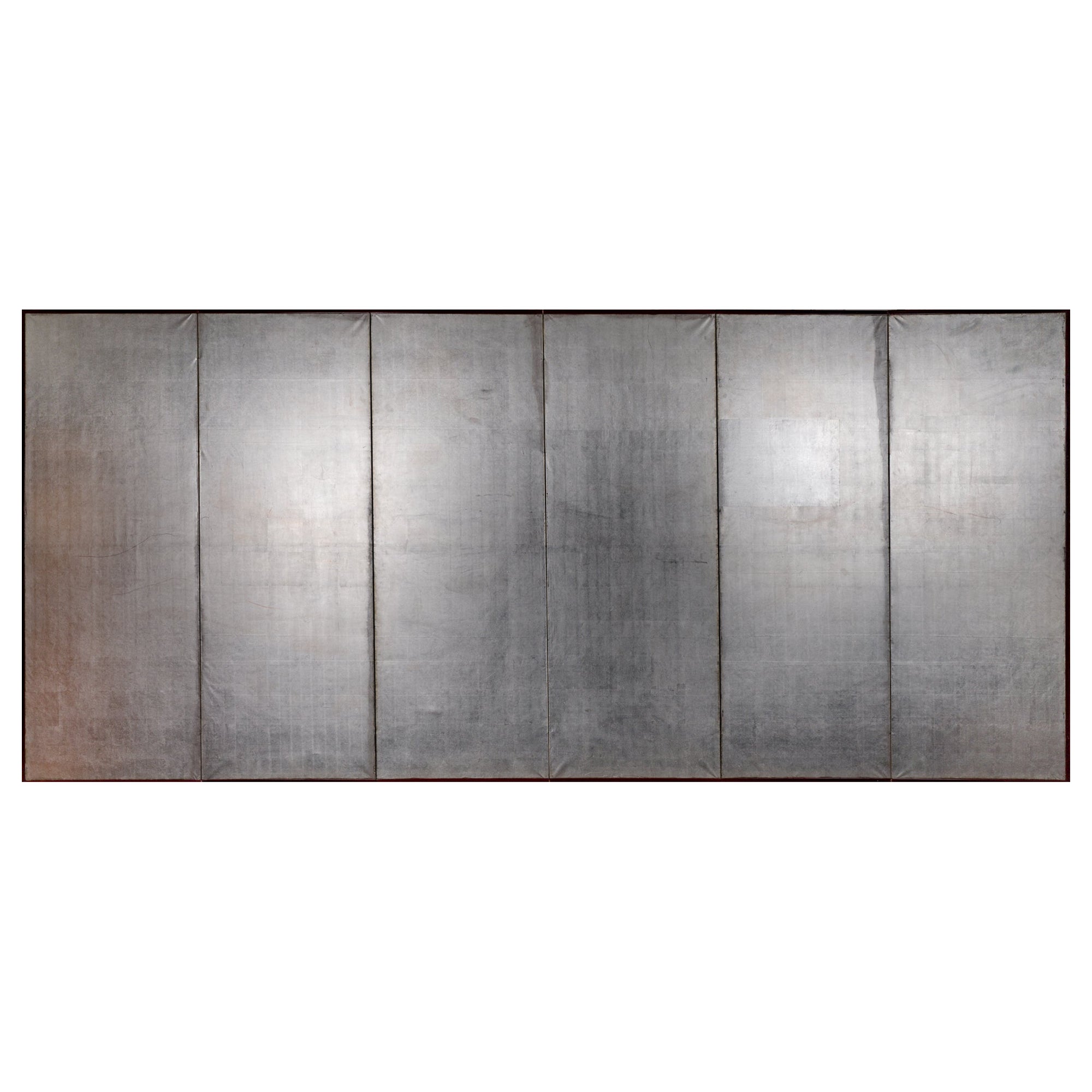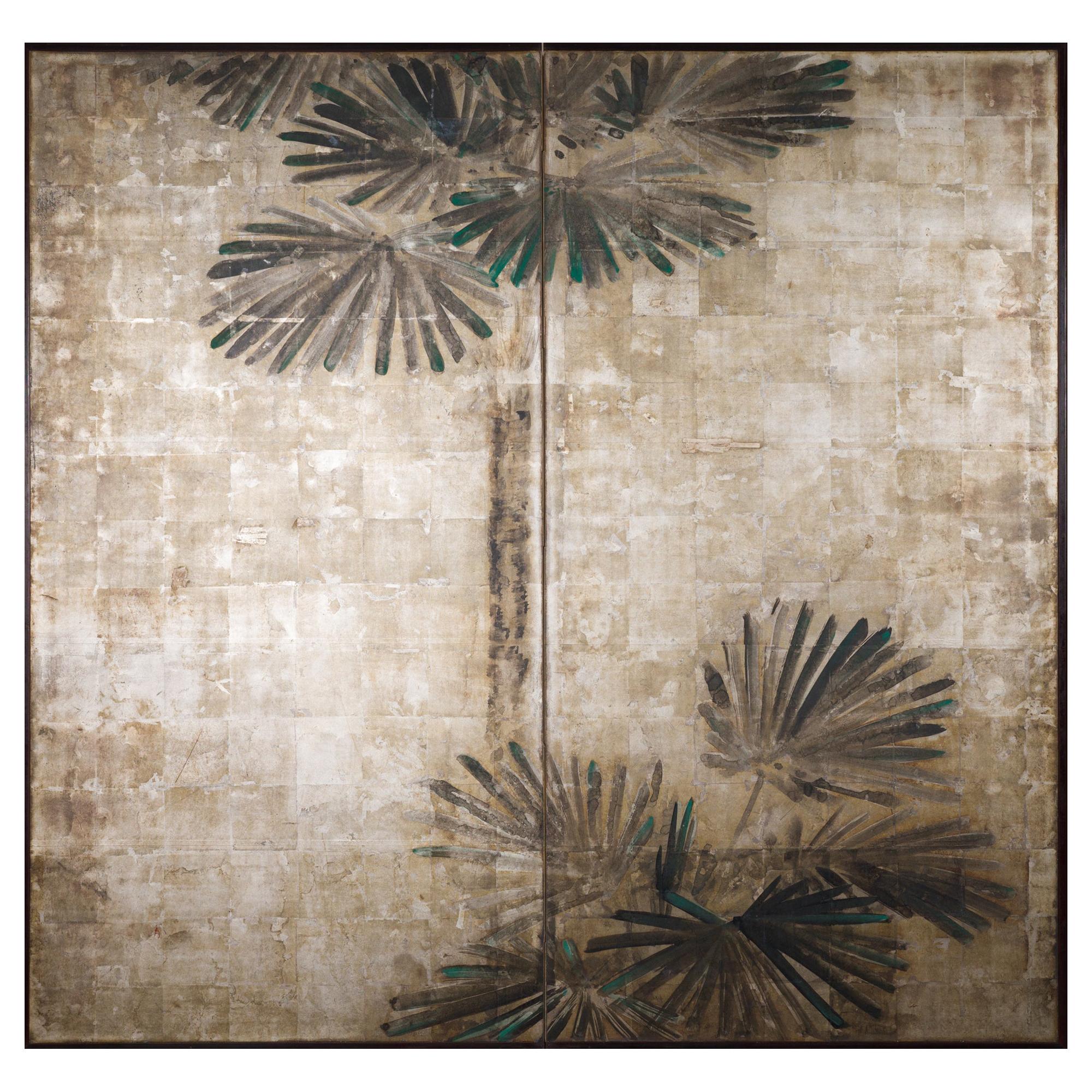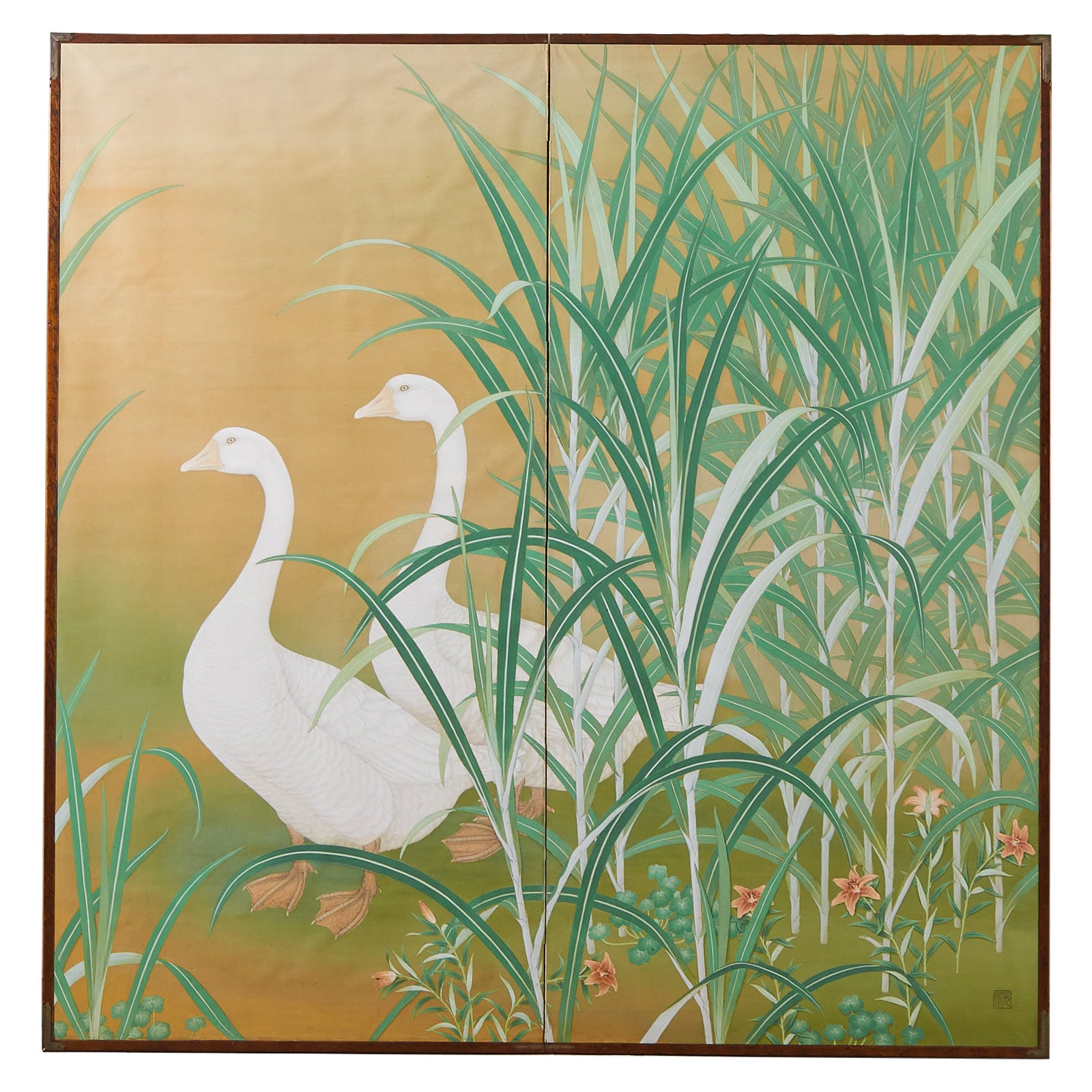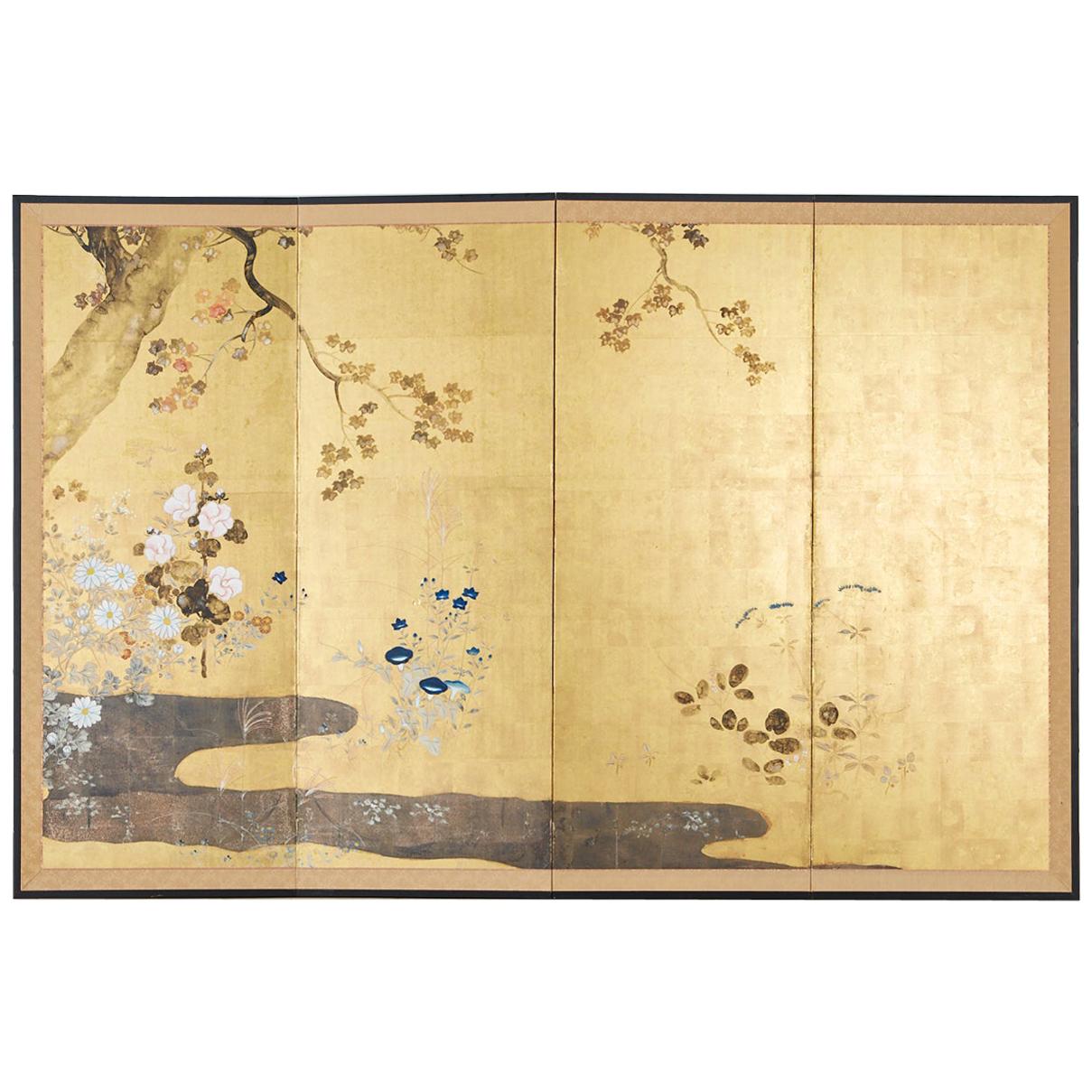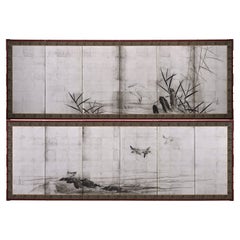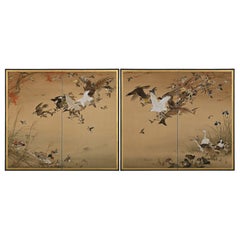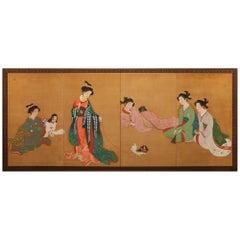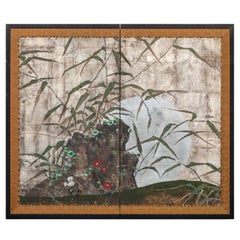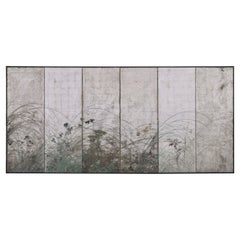
Meiji Period Japanese Screen, Autumn Grasses on Silver-Leaf
View Similar Items
Want more images or videos?
Request additional images or videos from the seller
1 of 9
Meiji Period Japanese Screen, Autumn Grasses on Silver-Leaf
About the Item
- Dimensions:Height: 67 in (170.18 cm)Width: 144 in (365.76 cm)Depth: 0.75 in (1.91 cm)
- Style:Meiji (Of the Period)
- Materials and Techniques:
- Place of Origin:
- Period:
- Date of Manufacture:circa 1890
- Condition:Wear consistent with age and use.
- Seller Location:Kyoto, JP
- Reference Number:1stDibs: LU2472328688842
About the Seller
5.0
Recognized Seller
These prestigious sellers are industry leaders and represent the highest echelon for item quality and design.
Established in 2001
1stDibs seller since 2016
60 sales on 1stDibs
Typical response time: 6 hours
More From This SellerView All
- Japanese Silver Screen Pair, Meiji Period, Herons & Plovers, Shijo SchoolLocated in Kyoto, JPHeron & Plovers Ink and silver leaf on paper Maekawa Bunrei (1837-1917) A pair of low six-panel Japanese screens by Maekawa Bunrei, a later master of the Kyoto based Shijo school of painting. On the right screen a solitary white heron stands motionless in a stream. On the left screen plovers play along a shoreline. The elegant forms are executed employing fluid, minimalistic ink brushstrokes. The soft brushstrokes and the sharp light of the silver leaf lend the scenes a sense of translucence. The sophisticated composition superbly exploits the long, horizontal pictorial surface of the pair of folding screens...Category
Antique Early 1900s Japanese Meiji Paintings and Screens
MaterialsSilver Leaf
- Meiji Era, Circa 1900 Japanese Screen Pair, Flowers & Birds of Spring & AutumnLocated in Kyoto, JPFlowers & Birds of Spring and Autumn Unknown artist. Japan. Meiji period, circa 1900. A pair of six-fold screens. Ink, color, gofun and gold leaf on paper. Signed: Gaga S...Category
Antique 1890s Japanese Meiji Paintings and Screens
MaterialsGold Leaf
- Meiji Period Japanese Screen Pair, One Hundred Birds by Hasegawa GyokujunLocated in Kyoto, JPOne hundred birds Hasegawa Gyokujun (1863-1921) Meiji period, circa 1900. Ink, color and gofun on silk. Dimensions of each screen: H. 170 cm x W. 190 cm (67’’ x 75”) Despite the title, well over 100 birds are represented in this pair of two-fold Japanese screens (the title functions figuratively to convey the idea of a large number). The monumental work is rendered with a comprehensive and highly complex composition which is exquisitely executed and meticulously colored. More a celebration of naturalism than the traditional “One Hundred Birds” paintings which originated in China. This was a subject matter known for its auspicious meaning as much as its actual depiction of nature. These paintings generally had a phoenix (occasionally peacocks) placed in the center, and the other birds paying homage to it. In this quintessentially Japanese scene painted by Gyokujun, a couple of long-tailed birds modeled after paradise flycatchers are included; these are traditional auspicious motifs in Oriental bird and flower painting and denote themes such as celebration and enduring generations. In addition there is the playful inclusion of single exotic parrot. Even so, the vast majority of the birds and flowers are native to Japan. Reading the scene from right to left, from spring through to autumn, the overwhelming sense is one of movement and haste. It is almost as if the birds are in a race, with the fleetest leading the way forward. Although these native birds were commonly drawn amongst artists of the Shijo school, rarely were they painted with such drama and dynamism. It is not strictly a depiction of sketched birds whose manner was faithfully handed down through the traditions of the Shijo school. Rather we see Gyokujun seeking and achieving new expressions in the heart of the turbulent Meiji period. Hasegawa Gyokujun (1863-1921) was born in Kyoto. He was the eldest son of Hasegawa Gyokuho, a Shijo school painter who studied under Matsumura Keibun. Gyokujun studied painting under his father and became a prominent member of the Kyoto painti ng world from a young age. In 1891 he established the ‘Young Painters Social Club’ along with Takeuchi Seiho, Miyake Gogyo and Taniguchi Kokyo. Also in 1891 he was selected as a judge of the Great Private Paintings Exhibition along with Takeuchi Seiho, Yamamoto Shunkyo...Category
Antique Early 1900s Japanese Meiji Paintings and Screens
MaterialsSilk, Wood
- Japanese Screen, 19th Century, Rabbits and Horsetail Reeds on Silver LeafBy NenmaLocated in Kyoto, JPUnknown artist Rabbits and Horsetail Reeds Painted in the Year of the Fire Dog, 1826 or 1886. 19th century. The scene depicted here is set under moonlight, with two hares hi...Category
Antique Mid-19th Century Japanese Edo Paintings and Screens
MaterialsSilver Leaf
- Circa 1900 Japanese Screen. Cherry Blossoms in Moonlight. Meiji period.Located in Kyoto, JPKobayashi Shosen (1877-1946) Cherry Blossoms in Moonlight Six-panel Japanese Screen. Ink, color and gofun on paper. The image depicts a stunning scene captured on a six-panel Japa...Category
Antique 1890s Japanese Meiji Paintings and Screens
MaterialsPaper
- 19th Century Small Japanese Screen Pair, Pine Trees and Vines on Gold LeafLocated in Kyoto, JPThis pair of screens depict just the middle sections of aged pine trees, painted in bold brush strokes on a background of gold leaf clouds. The trees are draped in vines, the lush cr...Category
Antique Mid-19th Century Japanese Edo Paintings and Screens
MaterialsGold Leaf
You May Also Like
- Meiji Period Japanese Four Panel Screen Bijin At LeisureLocated in Hudson, NYJapanese four panel screen: Bijin At Leisure. Ladies in a tea house with a small dog. Seal reads "Ensan dai" (drawn by Ensan). Meiji Period (1868 - 1912) pa...Category
Antique Late 19th Century Japanese Meiji Paintings and Screens
MaterialsSilk, Wood
- Japanese Six Panel Screen: Rimpa Painting of Autumn Flowers and Grasses on GoldLocated in Hudson, NYRimpa School. Ink, colors and gold on mulberry paper with a silk brocade border and black trim.Category
Antique Early 18th Century Japanese Paintings and Screens
MaterialsPaper
- Japanese Two Panel Screen Moon Rising Through Bamboo on Silver LeafLocated in Hudson, NYJapanese two panel screen: Moon rising through bamboo on silver leaf, Meiji period painting (1868 - 1912) of the moon rising on the horizon with a garden stone in the foreground. Lic...Category
Early 20th Century Japanese Meiji Paintings and Screens
MaterialsSilver Leaf
- Pair of Japanese Two Panel Screens Moon Rising Through Autumn GrassesLocated in Hudson, NYInk with accents of gold on paper. By Kodama Sanrei (1915-2002) exhibited at the 1968 Nippu-ten. About the Artist: Kodama Sanrei was born in Nagano prefecture and studied under the a...Category
Early 20th Century Japanese Paintings and Screens
MaterialsPaper
- Japanese Six Panel Screen: Plain Silver Leaf on PaperLocated in Hudson, NY(no image) With beautiful oxblood color lacquer frame with 19th century bronze mounts.Category
Early 20th Century Japanese Paintings and Screens
MaterialsBronze, Silver Leaf
- Japanese Two Panel Screen Palms on SilverLocated in Hudson, NYPalm trees on beautifully patinated silver leaf. Back paper is lovely hand printed with mica paint. Signature reads: Kiyoshi (Sei).Category
Antique Late 19th Century Japanese Meiji Paintings and Screens
MaterialsPaper
Recently Viewed
View AllMore Ways To Browse
On Silver Leaf
Antique Silver Leaf
Antique Japanese China
Japanese Antique China
Japanese China Antique
Japanese Influence Furniture
Silver Japanese Painting
Japanese Wave
Wave Japan
Gilt Screen
Six Fold
Antique Silver Leaf Paint
Hand Painted Japanese Screen
Japanese Screen Ink
Japan Ink Wood
Antique Decorative Screens
Chinese Paper Screens
Japanese Silver Leaf
